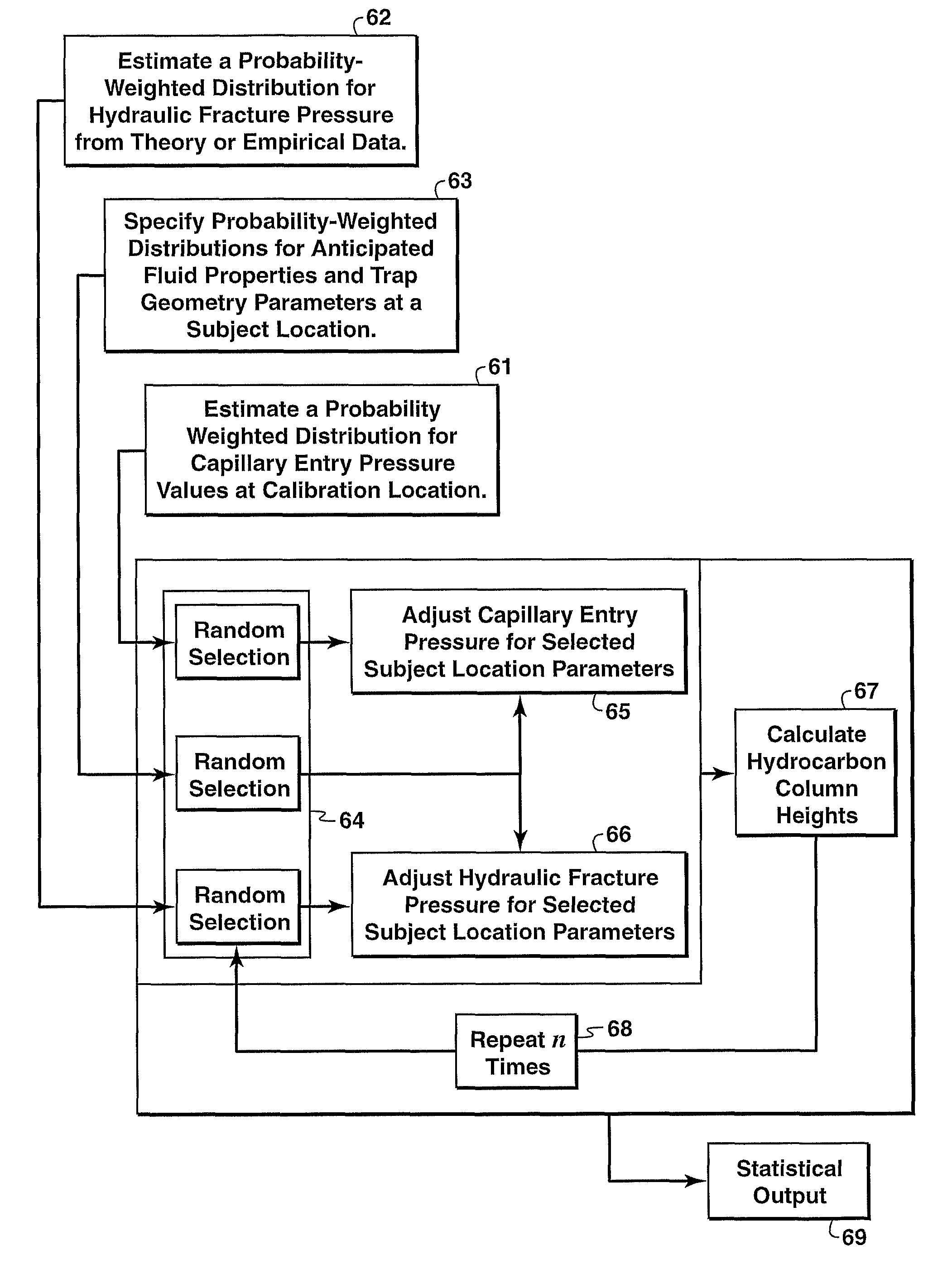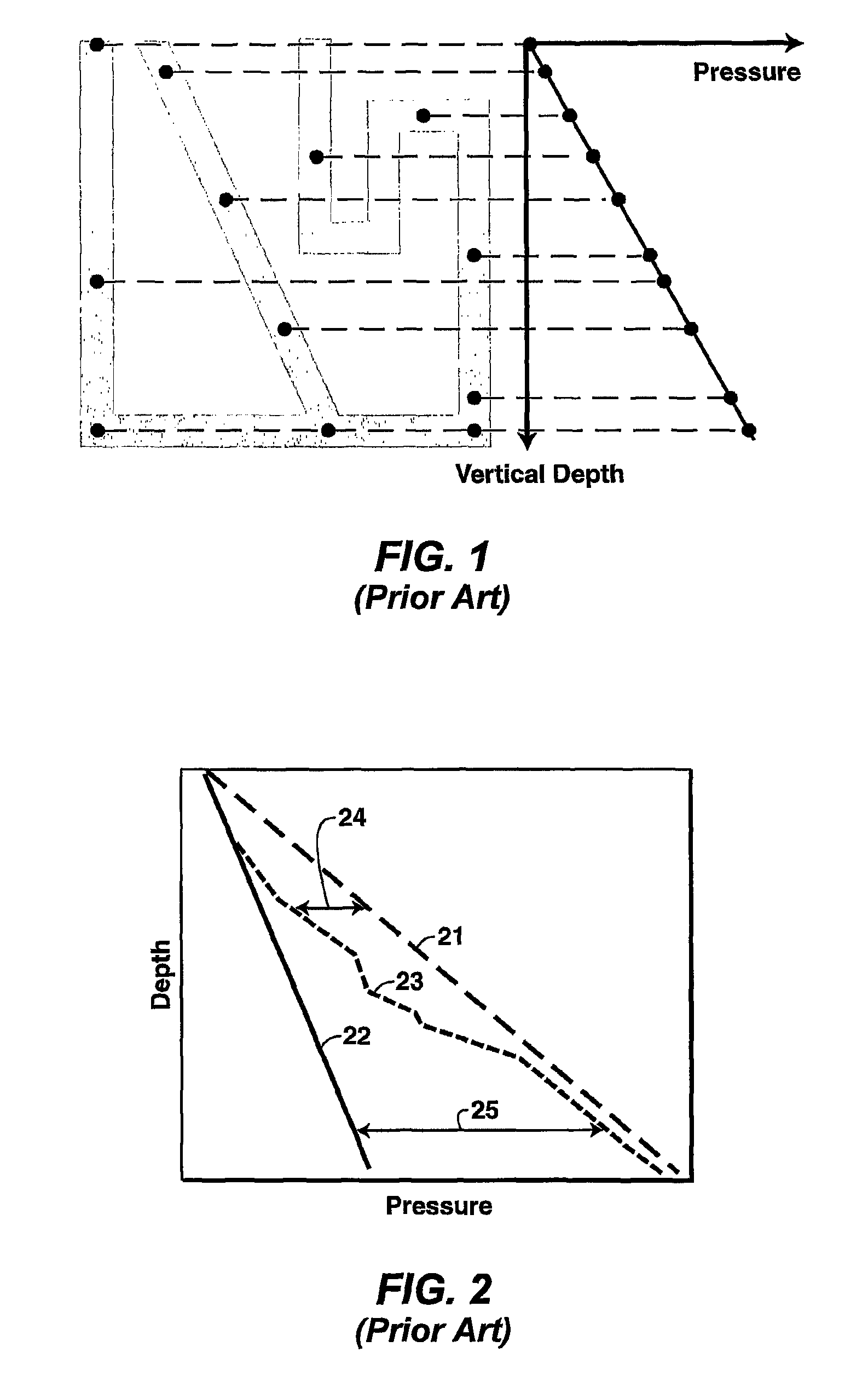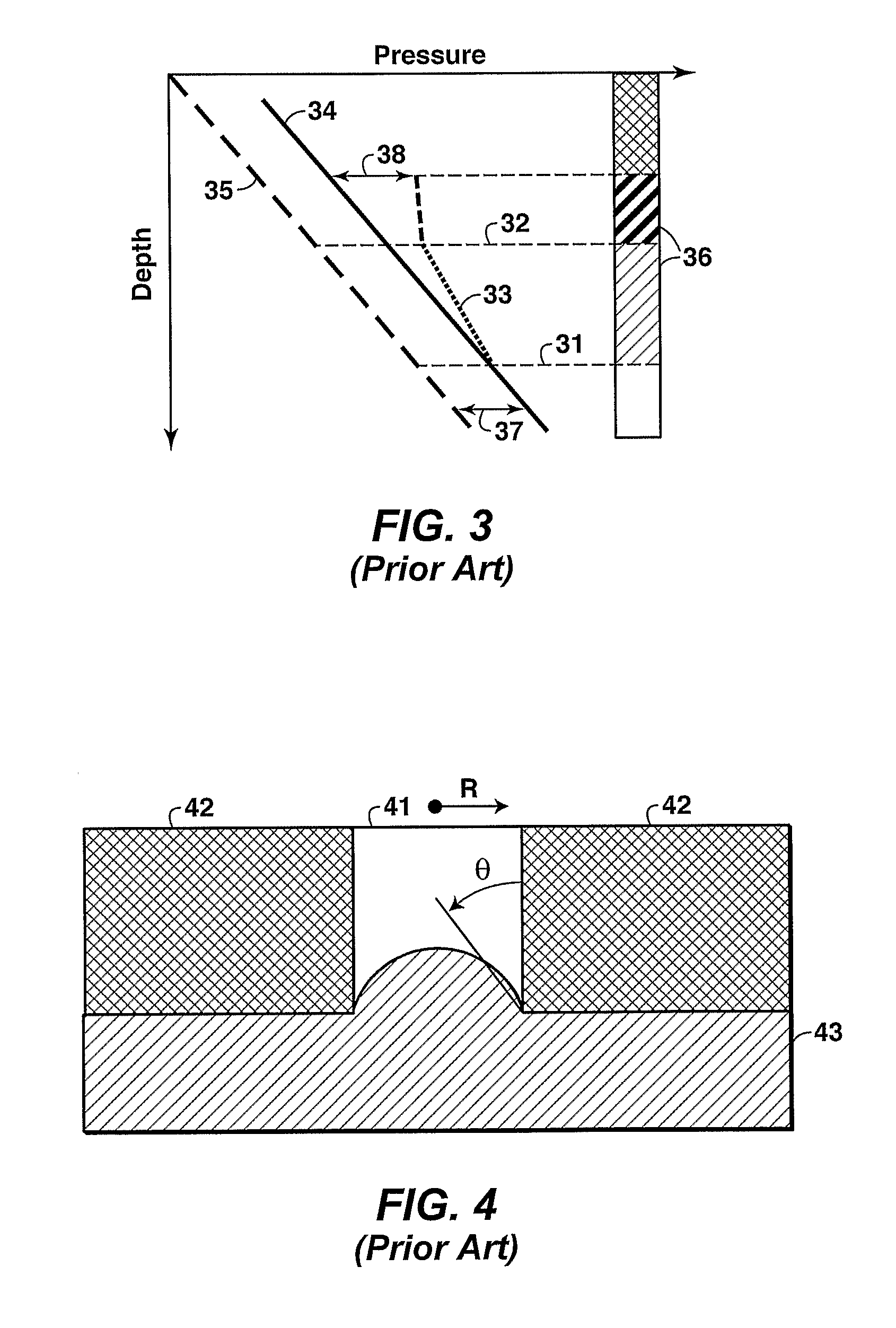Method for mechanical and capillary seal analysis of a hydrocarbon trap
a mechanical and capillary seal technology, applied in the field of hydrocarbon system analysis, can solve the problems of seal fracture and inability to test readily available everywher
- Summary
- Abstract
- Description
- Claims
- Application Information
AI Technical Summary
Benefits of technology
Problems solved by technology
Method used
Image
Examples
Embodiment Construction
[0025]The present invention is a method for predicting mechanical and capillary seal capacity in tandem, and propagating input parameter uncertainties to predict the probable error of the result. The present invention also discloses a method for predicting top-seal capillary entry pressure based on inversion of readily observed trap and hydrocarbon column-height parameters combined with fluid gradients estimated from commonly available fluid and physical properties data.
[0026]The present invention recognizes that predictions of total hydrocarbon column height and contacts in a hydrocarbon trap require combined evaluation of capillary and mechanical seal properties, careful evaluation and quantification of uncertainties, and the propagation of these uncertainties through the analysis. It is a premise of the present invention that a seal should be evaluated for mechanical seal capacity and capillary seal capacity simultaneously, and that this is a requirement for robust hydrocarbon co...
PUM
 Login to View More
Login to View More Abstract
Description
Claims
Application Information
 Login to View More
Login to View More - R&D
- Intellectual Property
- Life Sciences
- Materials
- Tech Scout
- Unparalleled Data Quality
- Higher Quality Content
- 60% Fewer Hallucinations
Browse by: Latest US Patents, China's latest patents, Technical Efficacy Thesaurus, Application Domain, Technology Topic, Popular Technical Reports.
© 2025 PatSnap. All rights reserved.Legal|Privacy policy|Modern Slavery Act Transparency Statement|Sitemap|About US| Contact US: help@patsnap.com



